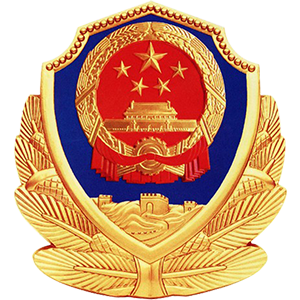Robust Constraint Following Control of Lower Limb Rehabilitation Robots Based on the Generalized Udwadia-Kalaba Method
-
摘要: 针对下肢康复机器人系统中同时存在的等式约束和不等式约束问题,提出了一种基于广义Udwadia-Kalaba(U-K)方程的鲁棒约束跟随控制器,能够使系统同时满足等式约束和不等式约束,并解决系统中存在的不确定性,使得机器人达到很好的约束跟随效果. 在机器人工作的过程中,传统的控制方法难以保证机器人的运动范围在边界条件内,可能导致患者在使用时受到二次伤害. 为解决边界问题带来的影响,提出了一种控制方法, 该方法利用微分同胚变换,将等式约束和不等式约束系统地纳入到U-K方程中,从数学上建立了广义U-K方程. 在此基础上,提出了一种鲁棒约束跟踪策略,以确保系统在存在不确定性和各种约束的情况下,仍具有满意的性能. 此外,利用Lyapunov函数对该鲁棒控制方法的稳定性进行了理论证明,并且通过仿真实验,验证了该鲁棒控制方法能够在非理想条件下实现给定轨迹的高精度跟踪控制.
-
关键词:
- 广义Udwadia-Kalaba方程 /
- 不等式约束 /
- 鲁棒控制 /
- 下肢康复机器人
Abstract: A robust constraint following controller based on the generalized Udwadia-Kalaba (U-K) equation was proposed for the problem of equality constraints and inequality constraints in the lower limb rehabilitation robot system, to make the system meet the equality constraints and inequality constraints at the same time, solve the uncertainty in the system, and achieve good constraint following effects on the robot. During the working process of the robot, the traditional control method is difficult to ensure that the motion range of the robot is within the boundary conditions, resulting in secondary injury to the patient during use. To solve the influence of boundary problems, a control method was proposed to use the diffeomorphism transformation to incorporate the equality constraint and inequality constraint system into the U-K equation, with the generalized U-K equation established mathematically. On this basis, a robust constraint tracking strategy was presented to ensure satisfactory performances of the system in the presence of uncertainties and various constraints. In addition, the stability of the robust control method was theoretically proved with the Lyapunov function. The simulation results show that, the robust control method has high-precision tracking control of a given trajectory under non-ideal conditions. -
表 1 动力学参数
Table 1. Dynamics parameters
dynamics parameter value dynamics parameter value l1/m 0.5 I3/(kg·m2) 0.012 2 l2/m 0.5 m1/kg 1.2 lc1/m 0.2 m2/kg 1.3 lc2/m 0.3 m3/kg 2.3 I1/(kg·m2) 0.023 3 m4/kg 2 I2/(kg·m2) 0.023 3 -
[1] 蔡国平, 刘晓峰, 刘元卿. 空间机器人捕获动力学与控制[J]. 动力学与控制学报, 2023, 21 (12): 22-36.CAI Guoping, LIU Xiaofeng, LIU Yuanqing. Capturing dynamics and control of space robots[J]. Journal of Dynamics and Control, 2023, 21 (12): 22-36. (in Chinese) [2] 尤鑫烨, 陈力. 外部扰动下空间机器人基于扰动观测器的鲁棒控制[J]. 动力学与控制学报, 2021, 19 (2): 37-42.YOU Xinye, CHEN Li. Robust control of space robot based on disturbance observer under external disturbance[J]. Journal of Dynamics and Control, 2021, 19 (2): 37-42. (in Chinese) [3] HAN S S, WANG H P, TIAN Y. Model-free based adaptive nonsingular fast terminal sliding mode control with time-delay estimation for a 12 DOF multi-functional lower limb exoskeleton[J]. Advances in Engineering Software, 2018, 119 : 38-47. doi: 10.1016/j.advengsoft.2018.01.004 [4] 杜义浩, 邱石, 谢平, 等. 下肢康复机器人的自适应人机交互控制策略[J]. 自动化学报, 2018, 44 (4): 743-750.DU Yihao, QIU Shi, XIE Ping, et al. Adaptive interaction control for lower limb rehabilitation robots[J]. Acta Automatica Sinica, 2018, 44 (4): 743-750. (in Chinese) [5] KREBS H I, HOGAN N, AISEN M L, et al. Robot-aided neurorehabilitation[J]. IEEE Transactions on Rehabilitation Engineering, 1998, 6 (1): 75-87. doi: 10.1109/86.662623 [6] 文忠, 钱晋武, 沈林勇, 等. 基于阻抗控制的步行康复训练机器人的轨迹自适应[J]. 机器人, 2011, 33 (2): 142-149.WEN Zhong, QIAN Jinwu, SHEN Linyong, et al. Trajectory adaptation for impedance control based walking rehabilitation training robot[J]. Robot, 2011, 33 (2): 142-149. (in Chinese) [7] MOSHAII A A, MOGHADDAM M M, NIESTANAK V D. Fuzzy sliding mode control of a wearable rehabilitation robot for wrist and finger[J]. Industrial Robot: the International Journal of Robotics Research and Application, 2019, 46 (6): 839-850. doi: 10.1108/IR-05-2019-0110 [8] 曹福成, 邢笑雪, 李元春, 等. 下肢康复机器人轨迹自适应滑模阻抗控制[J]. 吉林大学学报(工学版), 2016, 46 (5): 1602-1608.CAO Fucheng, XING Xiaoxue, LI Yuanchun, et al. Adaptive trajectory sliding mode impedance control for lower limb rehabilitation robot[J]. Journal of Jilin University (Engineering and Technology Edition), 2016, 46 (5): 1602-1608. (in Chinese) [9] MIRRASHID N, ALIBEIKI E, RAKHTALA S M. Development and control of an upper limb rehabilitation robot via ant colony optimization-PID and fuzzy-PID controllers[J]. International Journal of Engineering, 2022, 35 (8): 1488-1493. doi: 10.5829/IJE.2022.35.08B.04 [10] LI J, ZHOU Y, DONG M, et al. Isokinetic muscle strength training strategy of an ankle rehabilitation robot based on adaptive gain and cascade PID control[J]. IEEE Transactions on Cognitive and Developmental Systems, 2023, 15 (1): 100-110. doi: 10.1109/TCDS.2022.3145998 [11] 程思远, 陈广锋. 下肢康复外骨骼机器人模糊PID控制研究与仿真[J]. 测控技术, 2019, 38 (12): 22-28.CHENG Siyuan, CHEN Guangfeng. Research and simulation of fuzzy PID control for lower limb rehabilitation exoskeleton robot[J]. Measurement & Control Technology, 2019, 38 (12): 22-28. (in Chinese) [12] DU Y, WANG H, QIU S, et al. An advanced adaptive control of lower limb rehabilitation robot[J]. Frontiers in Robotics and AI, 2018, 5 : 116. doi: 10.3389/frobt.2018.00116 [13] KHOSHDEL V, AKBARZADEH A, NAGHAVI N, et al. sEMG-based impedance control for lower-limb rehabilitation robot[J]. Intelligent Service Robotics, 2018, 11 (1): 97-108. doi: 10.1007/s11370-017-0239-4 [14] MA Y, WANG J, LI Q, et al. Adaptive sliding mode control strategy based on disturbance observer and neural network for lower limb rehabilitative robot[J]. IET Control Theory & Applications, 2023, 17 (4): 381-399. [15] 沈智达, 杨卫华, 于晋伟. 基于神经网络的不确定移动机器人鲁棒自适应跟踪控制[J]. 动力学与控制学报, 2023, 21 (7): 89-96.SHEN Zhida, YANG Weihua, YU Jinwei. Robust adaptive tracking control of uncertain mobile robot based on neural network[J]. Journal of Dynamics and Control, 2023, 21 (7): 89-96. (in Chinese) [16] SHEN Z, ZHOU J, GAO J, et al. Fuzzy logic based PID control of a 3 DOF lower limb rehabilitation robot[C]// 2018 IEEE 8th Annual International Conference on CYBER Technology in Automation, Control, and Intelligent Systems (CYBER). Tianjin: IEEE, 2018: 818-821. [17] 王瑷珲, 葛祎霏, 胡宁宁, 等. 基于步态数据的下肢康复机器人控制设计[J]. 控制工程, 2021, 28 (11): 2266-2272.WANG Aihui, GE Yifei, HU Ningning, et al. Control design of lower limb rehabilitation robot based on gait data[J]. Control Engineering of China, 2021, 28 (11): 2266-2272. (in Chinese) [18] UDWADIA F E. A new perspective on the tracking control of nonlinear structural and mechanical systems[J]. Proceedings of the Royal Society of London (Series A): Mathematical, Physical and Engineering Sciences, 2003, 459 (2035): 1783-1800. [19] CHEN Y H, ZHANG X. Adaptive robust approximate constraint-following control for mechanical systems[J]. Journal of the Franklin Institute, 2010, 347 (1): 69-86. [20] CHEN X, ZHAO H, ZHEN S, et al. Adaptive robust control for a lower limbs rehabilitation robot running under passive training mode[J]. IEEE/CAA Journal of Automatica Sinica, 2019, 6 (2): 493-502. [21] YU R, ZHAO H, ZHEN S, et al. A novel approach for 2-degrees of freedom redundant parallel manipulator dynamics[J]. Advances in Mechanical Engineering, 2017, 9 (6): 168781401770506. [22] 赵韩, 赵福民, 黄康, 等. 基于Udwadia-Kalaba理论的机械臂位置控制[J]. 合肥工业大学学报(自然科学版), 2018, 41 (4): 433-438.ZHAO Han, ZHAO Fumin, HUANG Kang, et al. Position control of mechanical manipulator based on Udwadia-Kalaba theory[J]. Journal of Hefei Univercity of Technology (Natural Science), 2018, 41 (4): 433-438. (in Chinese) [23] 董方方, 杨超, 韩江, 等. 移动机械臂的层级聚合建模方法研究[J]. 应用数学和力学, 2023, 44 (12): 1473-1490. doi: 10.21656/1000-0887.440025DONG Fangfang, YANG Chao, HAN Jiang, et al. A hierarchical aggregation modelling method for mobile manipulators[J]. Applied Mathematics and Mechanics, 2023, 44 (12): 1473-1490. (in Chinese) doi: 10.21656/1000-0887.440025 [24] 徐张宝, 朱忠领, 马大为, 等. 考虑状态约束的液压系统自适应控制[J]. 西安交通大学学报, 2017, 51 (1): 97-102.XU Zhangbao, ZHU Zhongling, MA Dawei, et al. Adaptive control of hydraulic systems with state constraints[J]. Journal of Xi'an Jiaotong University, 2017, 51 (1): 97-102. (in Chinese) [25] SUN K, MOU S, QIU J, et al. Adaptive fuzzy control for nontriangular structural stochastic switched nonlinear systems with full state constraints[J]. IEEE Transactions on Fuzzy Systems, 2019, 27 (8): 1587-1601. [26] UDWADIA F E, KALABA R E. Analytical Dynamics[M]. Cambridge: Cambridge University Press, 1996. [27] KALABA R, UDWADIA F. Analytical dynamics with constraint forces that do work in virtual displacements[J]. Applied Mathematics and Computation, 2001, 121 (2/3): 211-217. [28] ZHANG X, ZHU W, WU X, et al. Dynamics and control for in-space assembly robots with large translational and rotational maneuvers[J]. Acta Astronautica, 2020, 174 : 166-179. [29] CHEN Y H, LEITMANN G. Robustness of uncertain systems in the absence of matching assumptions[J]. International Journal of Control, 1987, 45 (5): 1527-1542. -





 下载:
下载:









 渝公网安备50010802005915号
渝公网安备50010802005915号